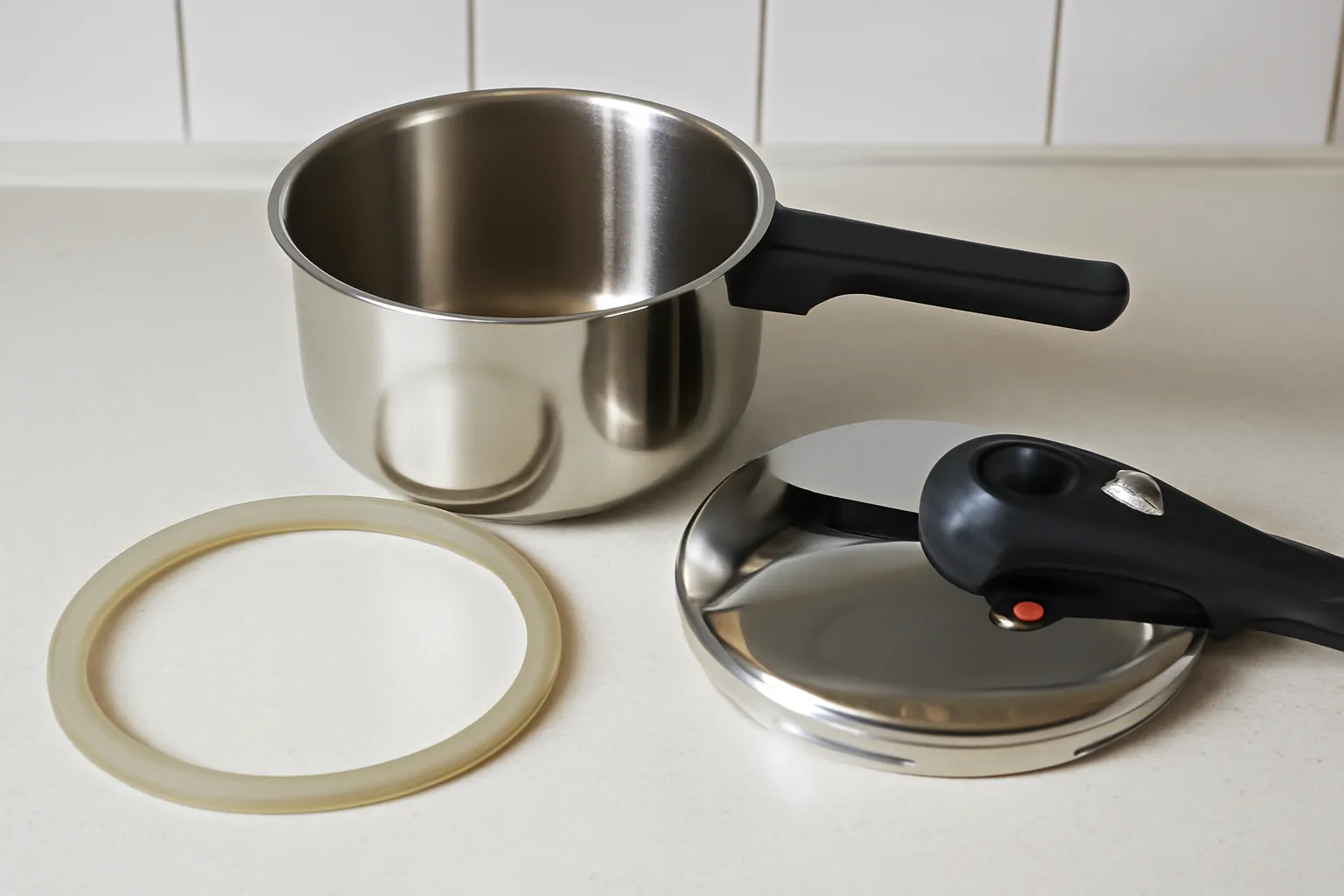Wondering how to maintain your Silit pressure cooker? Learn the essential role of the rubber packing, its upkeep, and other critical parts of your pressure cooker in this detailed guide.
The Importance of Silit Pressure Cooker Rubber Packing
The Silit pressure cooker is well-known for its durability, performance, and efficiency in the kitchen. One of the most important parts of this pressure cooker is the rubber packing or gasket, which ensures the proper functioning of the cooker by maintaining a sealed environment inside the pot. Without the right seal, the pressure cooker will not work properly, and you may face issues like steam leakage or an inefficient cooking process.
What Is the Rubber Packing in a Pressure Cooker?
The rubber packing, typically made of high-quality silicone or rubber, forms the vital seal between the lid and the pot of your pressure cooker. This seal prevents the escape of steam during cooking, which is essential for the pressure cooker to function efficiently. If the rubber packing is worn out, cracked, or damaged, it can cause issues like pressure loss or a failure to properly cook food.
How to Maintain and Replace the Rubber Packing?
Over time, the rubber packing may lose its elasticity or develop cracks, especially after frequent use. To extend the life of the packing, it’s essential to clean it regularly. Wash it gently with warm water and mild detergent, and ensure that it’s fully dried before storing it. If you notice any signs of wear, such as cracks or splits, it’s essential to replace the rubber packing immediately.
How to Know When the Packing Needs Replacement?
A faulty rubber packing can manifest in a few noticeable ways:
-
Steam Leaks If steam escapes from the sides of the lid, it’s a clear indication that the seal is no longer effective.
-
Difficulty in Locking the Lid If you struggle to close the lid or hear an unusual hissing sound, the gasket might be compromised.
-
Inconsistent Cooking Pressure cookers work by maintaining consistent pressure. If the cooking time seems too long, or the cooker is not coming to pressure as it should, the packing may need replacing.
The importance of maintaining a good rubber packing cannot be overstated, as it directly influences the cooker’s overall safety and cooking efficiency. If you’re unsure about how to replace it, many Silit pressure cooker models come with a simple guide or tutorial to help you replace the packing in no time.
🔧 Learn More About Silit Pressure Cookers 🔧
How to Use Your Silit Pressure Cooker Effectively
Using a Silit pressure cooker may seem daunting at first, but once you get the hang of it, you’ll find it to be one of the most versatile tools in your kitchen. Here’s a step-by-step guide to getting the most out of your Silit pressure cooker.
Step 1: Inspect the Rubber Packing
Before you start cooking, always check the rubber packing to ensure it’s in good condition. It should be clean, free of cracks, and properly seated in its groove. Without this step, your cooker won’t create the necessary pressure, and your food won’t cook as expected.
Step 2: Add Ingredients and Liquids
For your pressure cooker to function correctly, always add enough liquid to create steam. Typically, you’ll need at least one cup of liquid (water, broth, etc.), depending on the recipe and the food you’re cooking. Don’t overfill the cooker, as pressure cookers need room for steam to build up.
Step 3: Close the Lid Securely
Place the lid on the cooker, ensuring that the rubber packing sits properly around the lid. Lock the lid in place according to your model’s instructions, usually by turning the handle to a specific position.
Step 4: Set the Pressure and Cooking Time
Select the appropriate pressure setting, typically high or low, depending on your recipe. For instance, cooking beans or tougher cuts of meat might require high pressure, while vegetables may only need low pressure. Adjust the cooking time according to the recipe or use the pressure cooker’s built-in timer.
Step 5: Release the Pressure Safely
After the cooking time has passed, the pressure cooker will need to be depressurized. You can do this using the natural release method (letting it cool down on its own) or using the quick-release valve, depending on the type of food you’re cooking. Always ensure that you follow the manufacturer’s instructions for safe release.
Pro Tips:
-
Always cook on low heat once the cooker is pressurized. Using high heat can cause uneven cooking.
-
Never force the lid open if there’s still pressure inside the cooker. Allow the pressure to release naturally or use the quick-release function.
-
Regularly check the rubber packing and the locking mechanism to ensure everything is functioning properly.
🔧 Explore More Tips for Using Silit Pressure Cookers 🔧
Silit Pressure Cooker Parts You Should Know About
When it comes to maintaining your Silit pressure cooker, understanding its parts is crucial for longevity and safe operation. Here are the key components of a typical Silit pressure cooker:
1. The Rubber Packing (Gasket)
As discussed, this is one of the most important parts of the cooker. It ensures a tight seal between the lid and the pot, making it a critical component for maintaining pressure. Without a functional gasket, your pressure cooker will not perform effectively.
2. The Lid
The lid is the main sealing mechanism of the pressure cooker. It often includes a locking system that ensures the cooker stays sealed under pressure. Some models also feature a safety valve to prevent over-pressurization.
3. The Safety Valve
Located on the lid, this valve helps control the pressure inside the cooker. If the pressure becomes too high, the safety valve will release excess steam to prevent an explosion.
4. The Pressure Regulator
The pressure regulator allows you to adjust the pressure inside the cooker, ensuring that the food is cooked at the right temperature and pressure. It is typically located on the lid or the side of the cooker.
5. The Handle and Locking Mechanism
The handle is used to lift and move the pressure cooker, while the locking mechanism ensures that the lid is securely closed during cooking. It’s important to ensure the handle and locking mechanism are in good working condition to avoid any safety issues.
6. The Base Pot
The base pot is where the cooking takes place. It is typically made of stainless steel or aluminum, both of which conduct heat efficiently. The quality of the base pot is crucial for even cooking.
7. The Pressure Indicator
This is usually a small valve or indicator that shows whether the cooker is under pressure. It’s important for monitoring the cooker’s status while cooking and helps you know when it’s safe to open the lid.
Understanding these parts and how they work together is essential for maintaining the performance and safety of your Silit pressure cooker. Regular maintenance of these components ensures a long lifespan and optimal cooking results.
🔧 Check out Silit Pressure Cooker Replacement Parts 🔧
Conclusion
The rubber packing in your Silit pressure cooker plays an integral role in ensuring safe and effective cooking. By understanding its importance, how to maintain it, and when to replace it, you can keep your pressure cooker running smoothly for years to come. Remember, a little maintenance goes a long way in preserving your appliance’s performance and enhancing your cooking experience. Always check the parts, especially the rubber packing, before every use to ensure your cooker performs at its best.
In the wise words of Julia Child, “The secret to good cooking is not the tools you have, but the love and care you put into them.” So, take care of your Silit pressure cooker and enjoy the perfect meals it helps you create!






